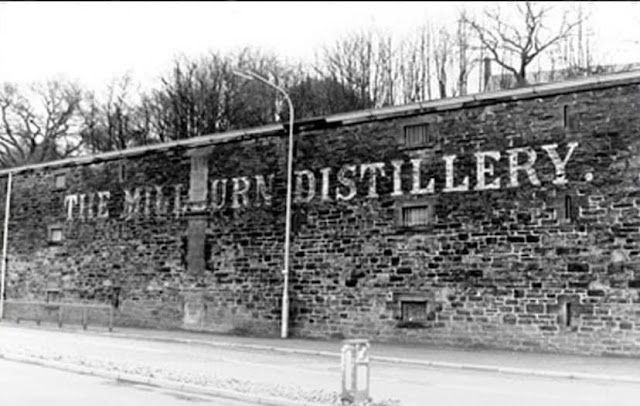Millburn Distillery 1960s
What I have learned through researching Glen Mhor is the benefits of reaching out and talking to people. It is amazing what information is scattered across the country in old records, books, memories and personal collections. These often won't be found in a library or documented previously, but raising the profile of a lost distillery such as Millburn, hopefully will allow us to collate such material.
An initial port of call is always the Diageo Archives, who have been brilliant in providing information for Glen Mhor. Every find and piece of new material is appreciated. And so it probably doesn't come as a surprise that I reached out to them in respect of the Millburn distillery.
Unlike the other two Inverness distilleries of Glen Albyn and Glen Mhor, which came under the DCL ownership (a forerunner of Diageo) in 1972, Millburn was more deeply rooted in the company. Purchased in 1937, I had hoped for a treasure trove of material to assist us in our research. Sadly, I'd say that the level of information on Millburn is around the same level we've seen with Glen Albyn and Glen Mhor. A clutch of photographs and the well-researched DCL Distillery History Series leaflet. I love a challenge and I expect Millburn will be the toughest nut to crack of the trio.
This view is taken during the 1960s and gives us a sense of how the site was becoming surrounded, which you can appreciate more in our map section. Up on the hill you have the garrison buildings, and like the Oban distillery, this hill would form a natural barrier preventing expansion. Then, the appearance of housing as Millburn, once a small village, was swallowed up by Inverness. The train tracks offered an opportunity for travel and for others to reach the Highlands, welcomed by a distillery as the train slowly edged its way into Inverness. Obscured by the stone wall, is the road that has been expanded today and offers the major route from the east into the city.
As I write this in 2022, at the beginning of this project, this photograph also gives us the final form of Millburn. The last major building works were undertaken in 1922, when Charles C. Doig was hired to oversee its restoration. Any changes thereafter (from what we know so far), were only internal. Time may say otherwise, but we'll see...
This photograph which was kindly provided by Diageo, my thanks again to the team for replying to my queries about these obscure Inverness distilleries. This image will be added to our photograph section.



Comments
Post a Comment